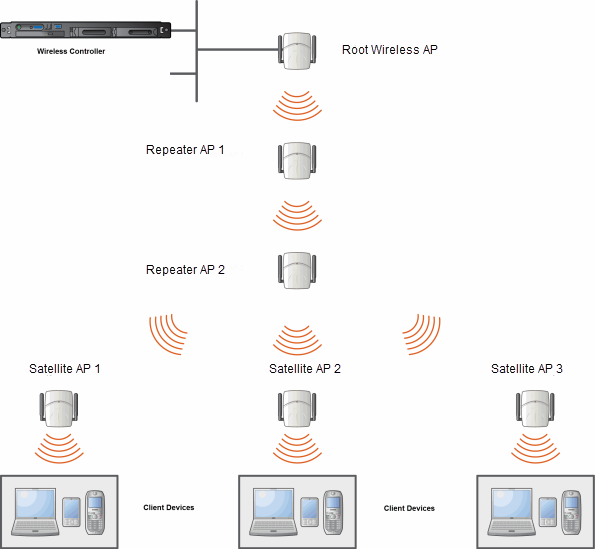The wireless APs in WDS configuration can be regarded as nodes, and these nodes form a tree-like structure. The tree builds in a top down manner with the Root AP being the tree root, and the Satellite AP being the tree leaves.
The nodes in the tree-structure have a parent-child relationship. The AP that provides the WDS service to the other APs in the downstream direction is a parent. The APs that establish a link with the AP in the upstream direction for WDS service are children.

Note
If a parent AP fails or stops to act a parent, the children APs will attempt to discover their backup parents. If the backup parents are not defined, the children APs will be left stranded.The following figure illustrates the parent-child relationship between the nodes in a WDS topology. In Parent-Child Relationship Between Wireless APs in WDS Configuration:

The WDS system enables you to configure the AP‘s role — parent, child or both — from the wireless controller‘s interface. If the WDS AP will be serving as a parent and a child in a given topology, its role is configured as both.

Note
It is recommended that you limit the number of APs participating in a WDS tree to 8. This limit guarantees decent performance in most typical situations.
Note
If an AP is configured to serve as a scanner in Radar, it cannot be used in a WDS tree. For more information, see Working with ExtremeWireless Radar.
 Print
this page
Print
this page Email this topic
Email this topic Feedback
Feedback